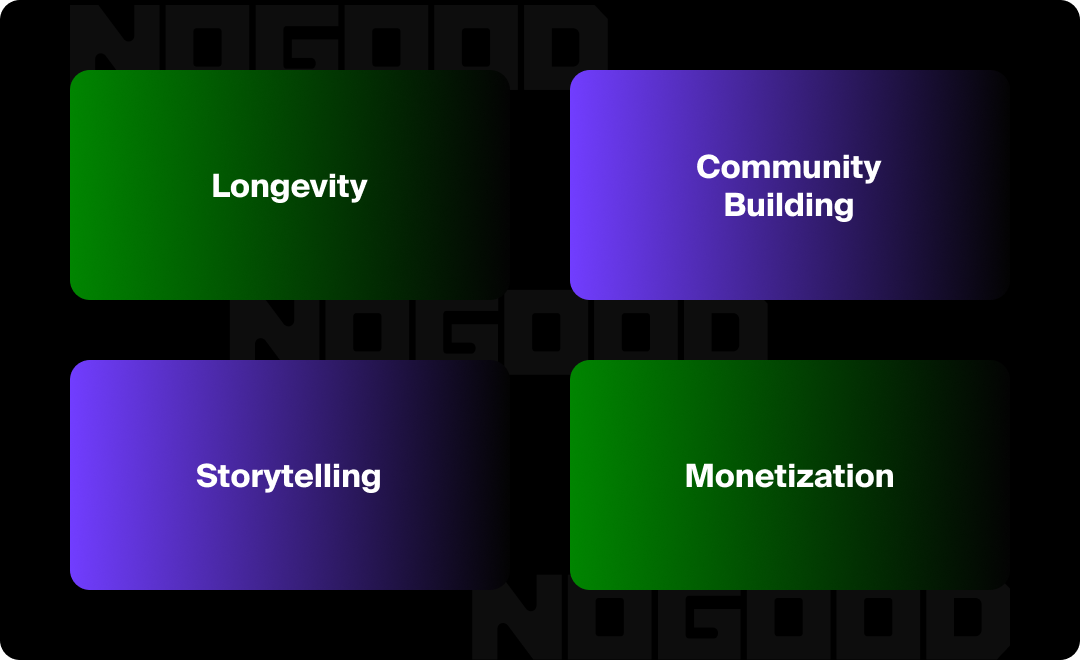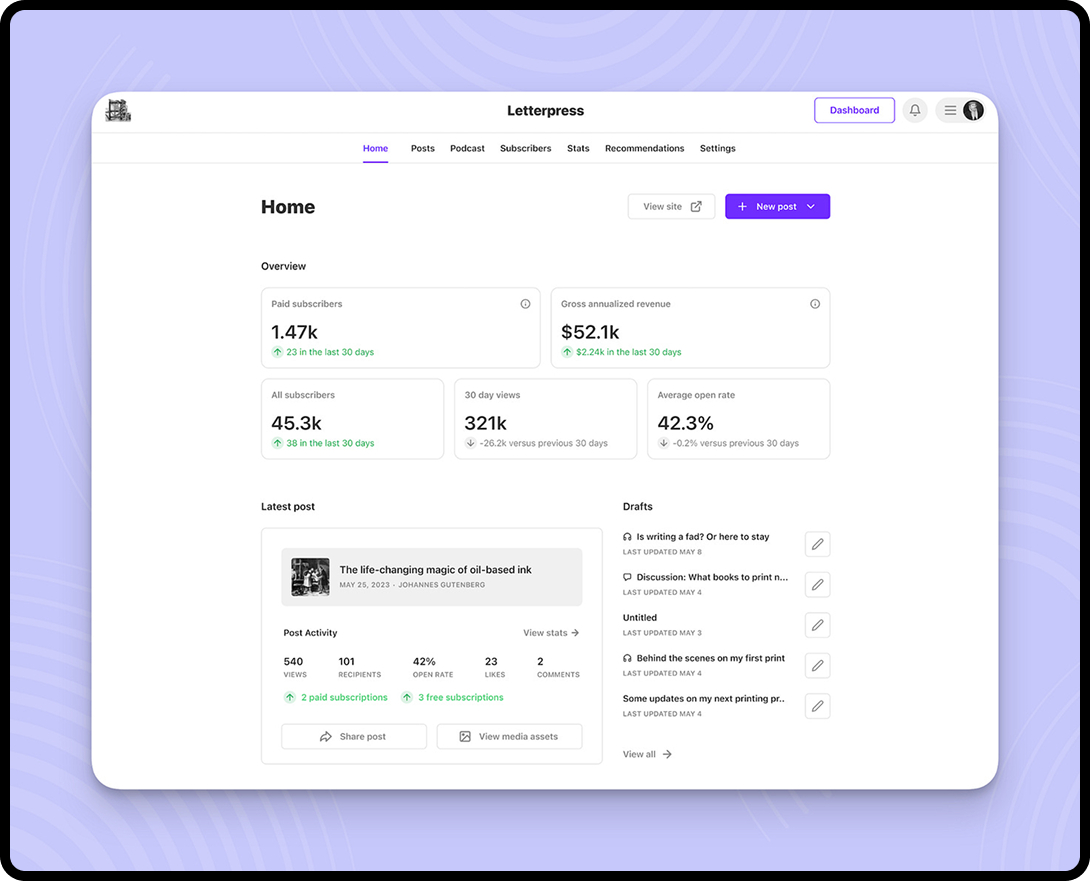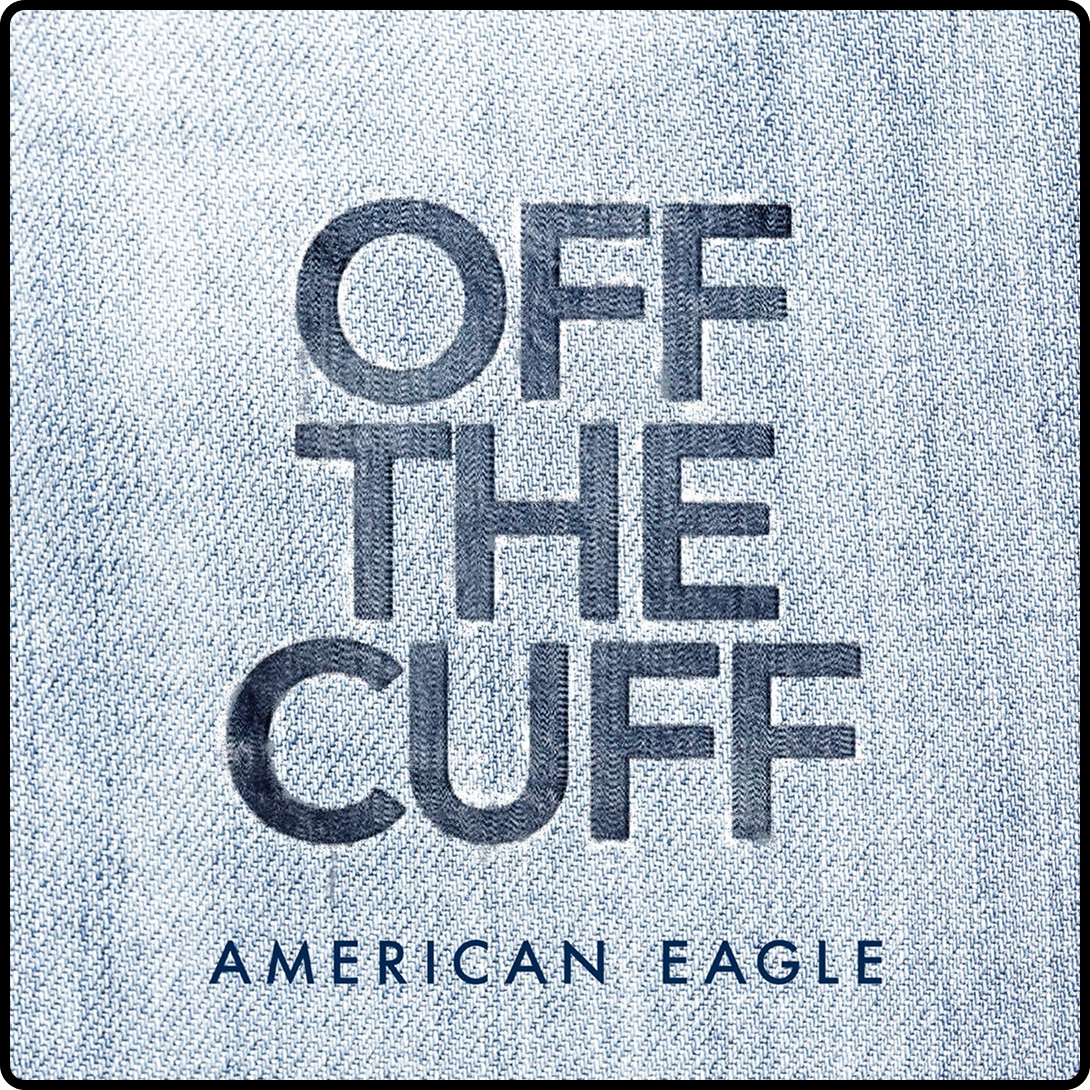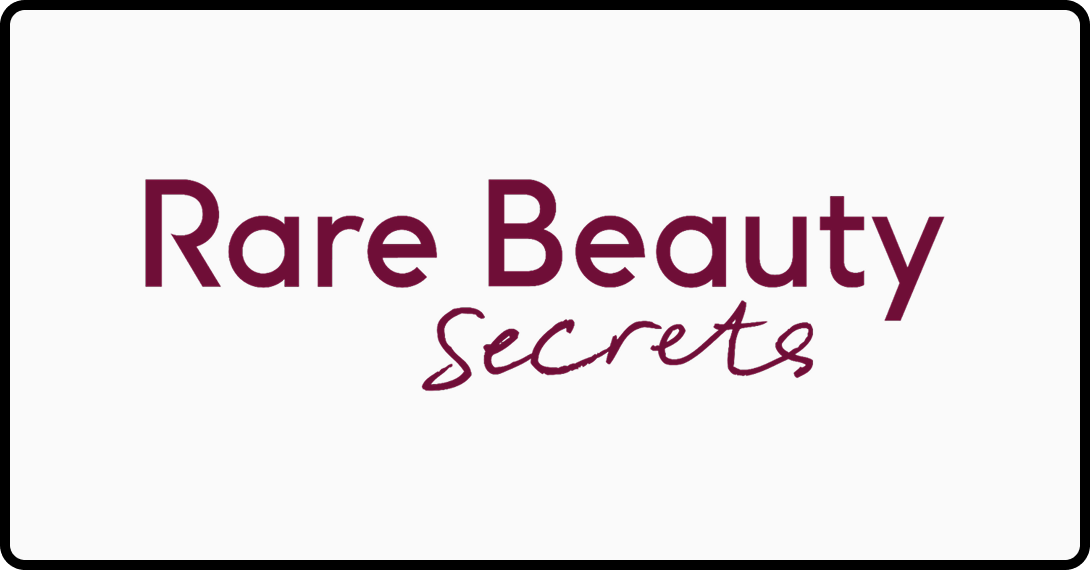From long-form to short-form content, people are craving something new (again) and this time, it’s not coming from TikTok. Substack is on the rise, establishing itself as the newest social media platform for brands to appear on.
It’s pretty clear that TikTok has developed a reputation for being one of the most influential social media platforms to exist, but For You pages are instilling a sort of dissatisfaction to users. For that, we can thank influencer marketing.
TikTok has become a live hub for influencer marketing with every few videos tagged #paidpartnership, featuring a TikTok shop link, or a GRWM disguised as a sponsored product placement. In 2024, influencer marketing value was worth over 24 billion dollars and is projected to see 22 billion dollars in 2025. Influencers on TikTok exist to sell viewers products, either due to genuine interest or via brand partnerships. In a sea of sameness with a sprinkle of niche, entertaining videos, people began to crave authentic storytelling.
Algorithms are also changing at a quickening pace; and not in the way viewers want them to. Now more than ever, algorithms are prioritizing recommendations over relevance. This results in algorithm fatigue. Not only are our FYPs selling users products every few minutes, they’re selling users ideas; ones that they didn’t ask for.
Overall, people feel overwhelmed by trend-chasing content and disconnected from the creators and brands they follow. This results in the algorithm controlling you, not you controlling the algorithm. With less personalized content, users feel more like lab rats for viral posts than owners of their own feed. This is where Substack comes in.
Substack’s Journey to the Top
If you’re not familiar, Substack is not to be confused with a regular style blog. It’s positioned as more than just writing; it’s a community hub. To approximate, imagine if Tumblr, Wattpad, and traditional blogs sites like Medium had a baby. That would be Substack.
Substack started back in 2017 in an era where platforms like Music.ly and YouTube were thriving. Fast forward to 2020, and Music.ly turned into TikTok, taking up everyone’s time and attention spans. It grew tremendously in the first quarter of 2020, scaling to over 315 million downloads globally. This momentum continued for years (and in came the booming influencer economy) until January 18th, 2025.
The TikTok ban left the world shattered (and we wish we were joking). Though it was only gone for just over half a day, brands were left looking into an empty void wondering what happens next. After all, these brands had begun to sink significant portions of their ad budgets into social media and influencer marketing in a post-COVID world. This was a major factor in Substack’s dramatic rise.
The reality is, the TikTok ban opened a door of opportunities for brands that didn’t see Substack’s potential before. “Where do we go now?” was a question every brand asked themselves. Instagram Reels and Youtube Shorts were obvious choices with engagement paling to that of TikTok, no one really considered X, and Threads was… just there.
In a world where long-form and short-form content is created with aesthetics at the center, the people craved something more. The need to diversify content increased, and Substack became the perfect platform to do just that.
Substack is a blog-slash-newsletter-slash-community hub. Writers can create their own websites for each of their newsletters and offer free or paid subscriptions for their content. This platform allowed creators to take full ownership of their writing (whether it’s one newsletter or multiple) and it gave them the opportunity to connect with niche communities. What sets Substack apart from the traditional blogs sites are its features, transforming what we consider a “social media platform”; because Substack is exactly that.
But here’s the catch. Substack was already seeing growth in 2023 and 2024 due to the rise of the independent writer economy. Except now, it’s not limited to small creators and retired journalists; brands have taken notice of its popularity and are taking matters into their own hands.
Why Brands Are Using Substack
This past year, we’ve seen brands like American Eagle and Rare Beauty start their own Substacks. The more popular Substack becomes, the more opportunities brands will seek to diversify their content and share their brand voice beyond traditional short and long-form content.
While Substack has made it easier for writers to become more independent and monetize their content, it’s also become a unique space for brand activations. But let’s get one thing straight: Substack is not meant for brands to be overly promotional or promote third-parties. It is solely a space for quality editorial content, meaning brands need to assign or hire great writers to represent their brand.
There are four main reasons why Substack has become an environment where branded content can thrive: longevity, community building, storytelling, and, of course, monetization.

Longevity
Post-TikTok ban, brands questioned the overall reliability of the app, which is why they branched out to platforms like Substack. While the longevity and trust may not be fully there yet, Substack leaves brands at ease, viewing it as a secure space for them to go to connect with their audience.
Community Building
Substack’s Notes feature makes it easier not only to write, but also to actually connect with readers. As for the Chat feature, it’s very similar to an Instagram broadcast channel: a direct line of communication to subscribers.
Notes can be utilized to post polls, thoughts, updates, and questions for subscribers to interact directly with the brand. It’s an exciting way for brands to build relationships and pull back the curtain behind who they really are.
Storytelling
Authenticity is a buzzword brands like to throw around, but the true winners are the ones who can tell a great story. There’s a reason why content creators have flocked over to Substack; focusing less on the aesthetics in favor of original thoughts and ideas.
What’s the vision, and what’s the value? These are questions that brands need to ask themselves when posting. Substack writers are the leading voices for brands. The platform is the perfect opportunity to enter niche communities with real thinking. If there is high engagement already established for a brand or if customers are already active participants, there is an easy opportunity to bridge the gap further and help customers see a brand beyond the influencer marketing.
Think deeper conversations. You know how it feels when you can spend all day with someone without it draining your social battery? Writing on Substack should be like that.
Monetization
It shouldn’t come as a surprise that there is a commercial value to Substack as a platform, too (after all, we’re talking marketing).
Diversifying content means more revenue streams. It’s a natural evolution: if any social media platform has enough users, brands will take advantage of it. Due to Substack’s options for multi-tiered newsletters, brands can play around with what kind of content they can offer at different price points.
Feature Breakdown: How to Use Substack for Marketing
The presence and development of community plays a huge role in what defines a digital space to be deemed as a “social media platform”, and Substack has exactly that. Due to its unique features, writers have potentially found themselves a new home.
Community Aspect: Notes & Restacks
Comments, comments, comments! Remember how I said Substack feels a little bit like Tumblr? Their home page is just that. Scroll down your “FYP” and you’ll find “Notes,” which are essentially threads; similar to LinkedIn, Threads, and X. Posts about fun moments, pictures of flowers, or anything related to the pieces you’ve read will appear here. The algorithm is tailored to provide you with notes of topics from others that align with your favorite reads.
Notes bridge the gap between readers and writers in a way that helps writers build a connection with whom they’re writing for. No more long author bios and following socials to keep up with your favorite author. Everything you need or want to know about them lies directly in Substack.
Repost? No, restack. In a Note, users can restack other notes so that it appears on their own account. This feature gives users the power to distribute their favorite content themselves, and show support to their favorite writers.
Seamless Experience
A lot of Substack’s success is due to their extremely seamless UX that essentially makes it feel like a social media platform.
- FYP: This is the homepage button that refreshes content for you based on what you read. It’s a space to post your own thoughts, comment, and restack other people’s notes. Subscribing to others is simple, too.
- Subscriptions: This is the hub that keeps all of your newsletter subscriptions in one place. Emails can feel overwhelming and easily get lost in the clutter, whereas Subscriptions completely cleans up that mess, providing readers with a stress-free way of keeping up to date with their favorite writers in one place.
- Videos: We’ve been focusing on writing up to this point, but worry not, video isn’t dead (though it’s not necessarily alive, either). The Video tab on Substack is similar to TikTok: like, comment, share, and restack. We won’t spend too much time on it at this point in time, as this is an area that writers have yet to fully dive into. While some may find success in posting short-form content, the essence of Substack lies within actual written posts.
- Chat: Talking to your favorite writer just got easier. Think Instagram Broadcast channels. In the chat, you can either talk directly to creators or get involved in a creator chat where readers can socialize with one another alongside a writer they’ve subscribed to. It’s a space for organic relationship-building and socialization.
- Activity: This is the home for your notifications; the real insights lie here. Past the arrow button you’ll find all of your creator stats. Here is where creators can track subscriber and view counts, paid and free subscribers, and see the trajectory of their follower count.

Income Opportunities
Hopes raised and dreams felt achievable for writers once it was established that they could make a reliable income on Substack. The subscription-based platform created a space where people could monetize not as ghostwriters, but as independent creators, too.
With paid subscriptions, there’s a 10% commission plus a small service fee charged by Stripe, meaning writers keep about 90% of their revenue from subscriptions. There’s even an opportunity to offer tiers of subscriptions with different costs to diversify revenue streams. With a strong, consistent, and engaging content strategy, both writers and brands can scale their income or profits.
Recommendations
A common struggle writers face is discoverability. Traditional search, SEO (and now AEO), is how blogs get discovered in search engines. Blog titles lied within blue links and answer citations, but Substack changed the game. Writers can recommend other newsletters through their recommendations feature.
Recommendations appear after you subscribe to a newsletter. Oftentimes, writers will recommend newsletters that are within the niche of their interests. It remains visible to every new subscriber as long as they’re still recommended. This makes it easier for writers, new and established, to grow their following in an organic way rather than through paid efforts.
5 Brands Succeeding on Substack Right Now & Why
1. TheRealReal’s RealGirl

Brand Voice
Everyone compares TheRealReal’s persona, “RealGirl” to Gossip Girl; and that couldn’t be more accurate. The newsletter is written by a (well, real) TheRealReal user who chooses to remain anonymous. RealGirl is truly unfiltered and honest.
Her role is to dissect, praise, analyze, and even roast The RealReal and its place in the fashion and resale industry. It gives a sort of Gossip Girl vibe with taglines like, “I Want Deja New, Not Deja Vu”.The RealGirl persona speaks directly to users with high brand loyalty, the ones who use TheRealReal daily.
Writing Topics
TheRealReal’s content strategy focuses on insider knowledge and resale mastery. From shopping hacks to tutorials, RealGirl gives tips to find rare fashion pieces and help customers up their resale game. Readers will see a mix of tips and tricks, trend breakdowns, and light-hearted industry gossip.
The Tie Back
The RealGirl persona is a perfect reflection of TheRealReal as a brand. By acknowledging that shopping on The RealReal is a form of art and skill, they position themselves as the platform that requires expertise, elevating the act of resale shopping to a sophisticated skill.
The newsletter serves as an opportunity to increase brand loyalty without actually “selling” users their site. Their main focus is on storytelling rather than promotions, and that’s what builds stronger emotional connections with their luxury customer base.
Even if it means embracing criticism, it presents a trustworthy voice to readers. Fortunately for TheRealReal, they have the first-mover advantage. Being one of the first brands to establish a presence on Substack, they’re developing a new space for luxury retail marketing. The newsletter transforms TheRealReal from just a marketplace into a cultural and community hub for luxury resale enthusiasts, creating deeper engagement with their most valuable customers.
2. American Eagle’s Off the Cuff

Brand Voice
American Eagle’s brand voice in their Substack newsletter, Off the Cuff, is distinctly conversational, helping readers feel like they’re getting an exclusive inside scoop. Think of it like a sort of group chat or Close Friends IG story.
They’re data-driven, yet casual by sharing facts that American Eagle wouldn’t “normally” share. They directly engage their Instagram community for insights to leverage in Substack content, like polling followers about jort preferences and sharing their opinionated answers.
Off the Cuff has a tone that’s genuine and approachable, avoiding a sort of “corporate speak” in favor of natural, friendly communication. The credit of their brand voice goes to Casey Lewis, a Substack creator with a newsletter called After School. American Eagle tapped into Substack’s version of a “brand ambassador”, using a successful creator to be the face and voice of their brand.
Writing Topics
American Eagle’s content strategy on Substack focuses on cultural trend analysis with added value from retail insights. Think trend deep-dives: their first post covered the rise of jorts among Gen Z with verified search data and cultural context.
They also blend guest editors and AE’s perspective to the spotlight on what’s shaping fashion, media, and youth culture today. This is where retail knowledge meets cultural observations.
The Tie Back
This newsletter strategy is aligned perfectly with AE’s brand positioning. It serves as a cultural and style digest with a focus on Gen Z. They’re relying on Substack to reach Gen Z, positioning AE as the voice of the demographic they primarily serve.
Rather than traditional marketing, they’re creating value by sharing insider knowledge and fostering real conversations about the trends that matter to their audience. By sharing data that big brands wouldn’t typically share, they’re building trust and positioning themselves as transparent industry insiders.
This essentially transforms American Eagle from a fashion retailer into a cultural curator and trendsetter for Gen Z, creating a deeper, more meaningful relationship with their audience beyond just product sales.
3. Rare Beauty Secrets

Brand Voice
Through their “Rare Insider” persona, Rare Beauty Secrets is distinctly community-focused, transparent, and authentic. They give readers a look behind the scenes of a bestselling beauty brand; like with their “How the Brow Gel Is Made” post.
The author of Rare Beauty Secrets sees herself as a community representative rather than speaking as a traditional brand voice. She often brings value and interesting thought-provoking content ideas to her writing, making it more about their audience, and less about selling makeup.
Writing Topics
Rare Beauty’s content strategy focuses on behind-the-scenes storytelling and community-driven narratives. Think deep-dives like “How the Blush Is Made” which can (and did) generate reader requests for more product backstories.
One thing that Rare Beauty is known for thanks to Selena Gomez is its mental health mission. To tie this in, stories about the Rare Impact Fund are posted on Substack to shed light on how important it continues to be for the brand. By interviewing people on the Rare Beauty team, customers can get an authoritative and trustworthy perspective from the people who work with (and for) Rare Beauty.
The Tie Back
Rare Beauty Secrets directly supports Rare Beauty’s mission of being “beyond beauty products”. Their willingness to share product development stories creates the transparency that aligns with their brand’s emphasis on being “rare”; a much-needed change from typical beauty marketing. Plus, the long-form stories that can be found on Rare Beauty Secrets don’t always fit on platforms like TikTok and Instagram. Additionally, by positioning the writer as a community representative, they reinforce that Rare Beauty is about the people who use it, not just the products themselves.
This defines Rare Beauty as not just another celebrity beauty brand, but one that’s community-driven. Their perspective shows their genuine care about customer stories and experiences, which perfectly reinforces their mission of redefining beauty standards and promoting mental health awareness.
4. Julie’s Sex Happens

Brand Voice
Julie’s brand voice through Sex Happens is incredibly Gen Z-coded, and doubles down on shame-busting: think your group chat with your best friends. Their brand voice prioritizes conversational realness over clinical formality like their post, “Your Freakmode Summer Reading List”. Eye-catching title? Yes, but that’s the point. They use humor strategically to make uncomfortable topics approachable, using comedy as an entry point for new readers. With this, they actively “anti-shame” and use their voice to normalize taboo topics about sex, dating, love, and relationships.
Writing Topics
The Sex Happens content strategy focuses on educational destigmatization and community building about sex. With their Substack, they’re breaking down barriers and becoming an entry point for readers who lack (or are ashamed to seek out) sex education.
Julie is an emergency contraceptive brand, so one of their big focuses lies on educating people about emergency contraceptives. Their newsletter sign-off reads, “a dedicated space for writing about all things sex, love, dating, and relationships from your friends at Julie”. They’re positioning themselves as trusted friends for your intimate conversations; not a brand. There’s also a coming-of-age aspect to their writing that unifies the personal experiences of many women, making their pieces not only relatable but heartfelt.
The Tie Back
Julie’s positioning in Sex Happens actively destigmatizes conversations about sex. The newsletter creates open dialogue about topics that are traditionally talked about in secret. Just as they want women to be able to talk about their health comfortably, their newsletter makes sexual health content feel as approachable as any lifestyle publication.
Julie thinks of themselves as a safe space, and they are living up to that. By filling the gaps left by a notoriously inadequate sex education, they position themselves as advocates putting women at the forefront of their brand when talking about reproductive options like contraception and abortion pills.
The newsletter transforms Julie from just another pharmaceutical company into a cultural movement that’s redefining how young people think about sexual health: making it funny, safe, and shame-free rather than intimidating.
5. Loftie’s Little Book of Sleep

Brand Voice
Loftie’s brand voice is conversational, witty, and curious. There’s a noticeable balance between being approachable and sophisticated, using humor to make complex cultural topics accessible. Headlines like “Places I Desperately Want to Nap” add a witty yet relatable aspect to their writing. They also reference cultural moments from art history to current events, showing depth in the “art of sleep”.
Writing Topics
Loftie’s content strategy focuses on cultural explorations in sleep rather than promotional material, with contributions from staff across departments. Their pieces include cultural deep-dives like their analysis of beds in art history, examining how sleep and bedroom culture intersect with broader movements.
Staff from Loftie often contribute as a way to blend individual experiences with broader themes that they can expand on as experts. The content is more like a lifestyle magazine than a brand newsletter, positioning sleep as a lifestyle people should care more about.
The Tie Back
If Loftie released a magazine, this is what it’d look like; Substack edition. None of their Substack content promotes Loftie itself, or their products; Little Book of Sleep and Loftie are almost two completely different entities, bound by the same mission.
This strategy brilliantly reinforces their brand positioning by elevating the sleep conversation. Instead of just selling sleep products, they speak with the voices of thought leaders in sleep culture (whether it’s exploring the cultural significance of sleep or bedrooms).
Thought-provoking content about sleep culture makes readers think differently about their relationship with sleep and their bedroom space. This is what makes them stand out against their competitors. While other brands focus on sleep science or product benefits, Loftie explores sleep as a cultural phenomenon that everyone needs to tap into. This approach transforms Loftie from a simple alarm clock company into a lifestyle brand that understands sleep as part of a broader cultural conversation about home and well-being.
Best Practices & Tips for Success on Substack
It’s not just independent creators that are finding a new home for their writing pieces, it’s brands too. The ones falling behind are those who need to figure out one thing: how to gain trust without selling the brand.
- Have a Clear POV: Separate your newsletter’s personality from other brands and start with a consistent voice. If your brand was a person, what would they sound like? The more you embrace your persona’s writing style, the easier it reads. Whether it’s using emoticons, unconventional capitalization styles, or multiple exclamation points every other paragraph, it adds a human touch to your writing style.
- Repurpose Top Performers Into Newsletters: Use what you know works on other social media platform strategies. Use top performers (those with high engagement) as an opportunity to deep dive and expand the conversation through writing. With this comes social listening; comments from viral videos are an opportunity to talk about in newsletters.
- Collaborate With Creators: As brands are still dipping their toes into Substack, finding and working with successful Substack creators in your space can help. Those creators already flex a huge following, meaning their audience is more likely to support yours once the collaboration is announced. They already know how to write; they just need to know your brand to make the collab seamless.
- Inspire > Influence: Unlike more traditional social platforms, Substack isn’t meant for influence. It’s for storytelling, sharing experiences, and discussing thoughts. Adding affiliate links and talking about your products 24/7 is the opposite of what brands should be doing. Newsletters aren’t about the whats and wheres, it’s about the hows and whys.
Remember, when it comes to Substack, having the recognition of a big brand name doesn’t mean success will follow. It’ll be the brands with the right voice, style, and tie back that will ultimately win the hearts and minds of readers.







